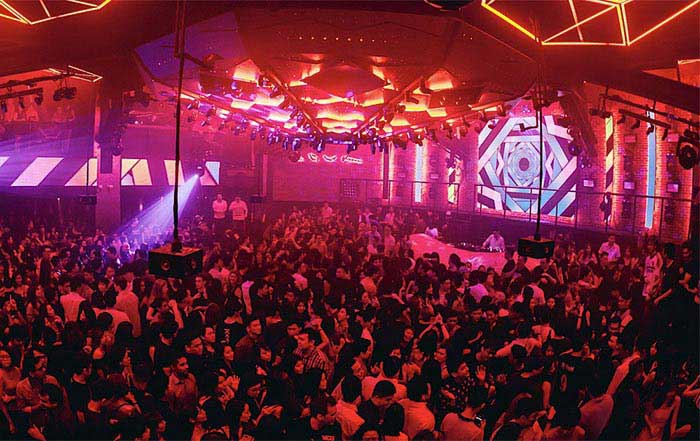Perx Technologies, the SaaS leader in dynamic, mobile-first customer engagement and loyalty, today announced the launch of its category creating product – The Perx Lifestyle Marketing Platform (Perx LMP). Traditional static loyalty and rewards programs are no longer working in a rapidly evolving digital economy. They are expensive to maintain and have become a liability affecting the bottom line of brands globally. Today's customers come in many forms. As consumer and ecosystem partners' behavior rapidly evolves, Perx believes that the manner in which brands engage them needs a rethink. Perx's LMP is purpose-built to enable brands to shift from being transient and transactional to delivering meaningful relationships with their ecosystem across millions of customers and partners globally.
Perx launches the world's first lifestyle marketing platform to transform mobile-first customer engagement.
As a first of its kind, the platform creates a new category within the global marketing technology ecosystem.
Regional and global brands have driven over USD 400M in top line contribution in the last three years using the platform.
Powered by hyper-personalization, advanced gamification and sophisticated rules engine capabilities Perx LMP re-energizes a brand's customer experience and loyalty engagement strategy by syncing it with the daily lifestyle choices of its customers. The platform enables marketers and digital teams to drive and monetize customer actions and increase customer-brand touchpoints by reimagining the digital consumer journey.
There are three key market trends that necessitate the introduction of a new category called Lifestyle Marketing in the Martech space. First, the pandemic has dramatically accelerated the need for businesses to become digital and mobile-first. In 2020 with the average consumer spending close to four hours each day on a smartphone, 332 million people came online for the first time globally to bank, shop, play and order food.
Second, the rise of the mobile-first instant gratification economy has made brands realise the limitation of present day marketing technology stacks to support building unique 'aha moments' into traditional digital customer journeys; from acquisition to last mile redemption and more importantly, every user action in-between. With 73% of the world's mobile phone users owning a smartphone, brands globally are exploring how to innovate beyond their core business models to establish a 'super-app like' services ecosystem tailored around their closed loop customers.
Lastly, today almost all marketing technology platforms are designed mainly to drive vanity metrics such as eyeballs, clicks, and open rates, rather than contributing to top-line growth. The outcomes are static, unengaging, and transient customer engagements that abruptly end in an SMS, email or social media post.
But, critical to any engagement strategy is the customers' last-mile journey. The Perx Lifestyle Marketing Platform extends this last-mile beyond usual stopovers through interactive, gamified, and incentive-led engagements that nudge customers to complete the actions and transactions that the marketer and the brand actually intended to drive. Perx has also launched the Rewards Marketplace that offers an elaborate curated list of merchant rewards aligned to the lifestyles of the digital consumer. In just 3 simple clicks, brands can stand up to the instant gratification trend by rewarding customers for their actions through personalized lifestyle rewards. Moreover, brands that want to stand up their own in-app, mobile commerce store and build a new revenue stream can now do so without heavy investments or resource allocation.
Here's what Stephanie Kubota, CEO of RUSH, a wholly owned subsidiary of Globe Telecom, the largest telecom operator in the Philippines, said, "The Perx Lifestyle Marketing Platform is one of the sharpest tools in our marketing toolkit. Everything is just a few clicks away, from slicing and dicing target personas to identifying and launching dynamic experiences that nudge and trigger customer actions. In our recent execution with Perx, we drove over a million customer actions, targeting a specific test segment, in just 100 days from the point of onboarding, and, over 70% of them were actions that contributed to the top-line growth of the brands."
Commenting on why Starhub chose to implement the Perx Lifestyle Marketing Platform, Maneesh Verma, VP, Customer Lifecycle Management, said, "Even though there are many martech platforms out there for us to choose from, we didn't want to settle with any of the traditional or status-quo ones. Unlike other solutions, Perx's Lifestyle Marketing Platform actually drives meaningful customer engagements and is built to digitally engage better. An outcome of that is more customer stickiness and real customer actions that contribute to the top-line."
Commenting on why hoolah chose the Perx Lifestyle Marketing Platform, Stuart Thornton, CEO & Co-Founder, said, "As a digital native in the Buy Now Pay Later space, our goal is to provide flexibility to consumers in a world filled with constraints and do so responsibly. We chose the Perx Lifestyle Marketing Platform to build meaningful engagements in our hoolah ecosystem between consumers, partners and merchants. Perx LMP will help us augment the natural value of the hoolah platform by further driving customer acquisition and retention through personalisation and dynamic in-app engagements that reward customers for their every action."
Regarding the launch of the Perx Lifestyle Marketing Platform and the Rewards Marketplace, Anna Gong, CEO & Founder of Perx Technologies, said, "The Perx Lifestyle Marketing Platform enables brands to lead with engagement and not loyalty, innovate beyond their core business models and create a monetizable lifestyle ecosystems around their closed-loop network of consumers, partners, and merchants. This approach not only allows brands globally to better address and solve customer lifestyle wants and needs but also builds a moat around those customers by drastically increasing brand touchpoints. With advanced gamification and campaign automation capabilities, hyper-personalised and instantly gratifying incentives, the platform has proven to be an effective enabler of the digital lifestyle ecosystems for enterprises and digital natives."




